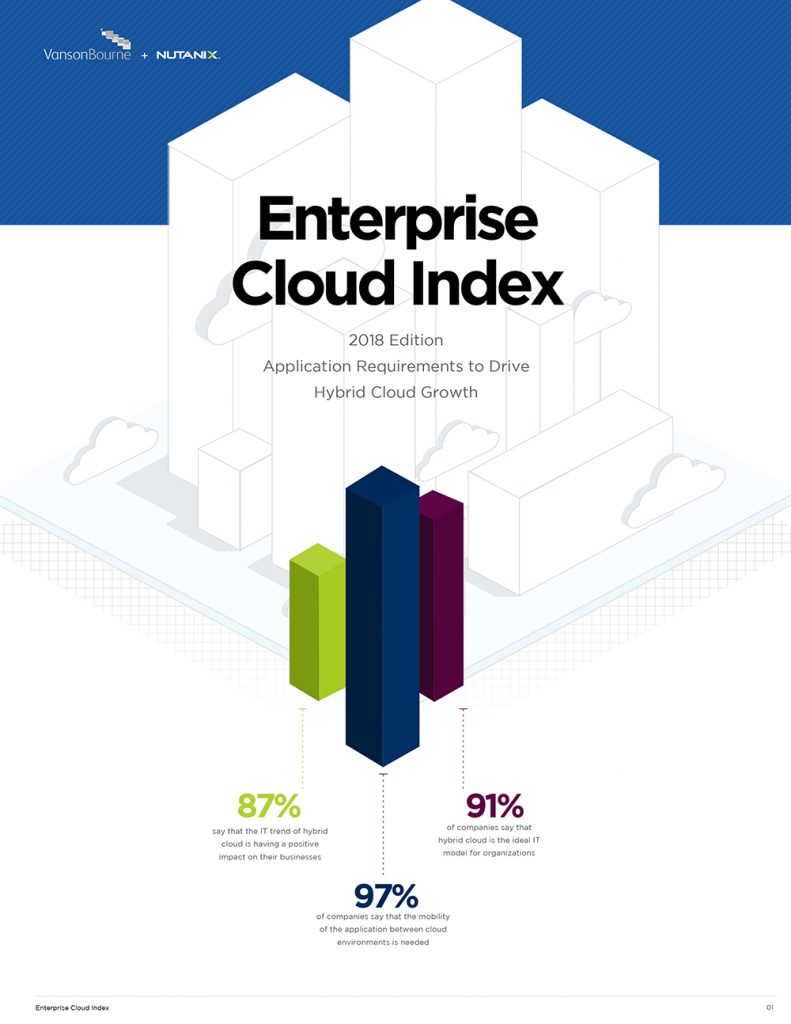Nutanix, a leader in enterprise cloud computing, has announced the findings of its first annual global Enterprise Cloud Index, measuring enterprise plans for adopting private, hybrid and public clouds.
The new report found enterprises plan to increase hybrid cloud usage, with 91% stating hybrid cloud as the ideal IT model, but only 18% stating they have that model today. In South Africa, the results compared strongly with the rest of the world, with a total of 93% of the local respondents agreeing that hybrid cloud is the ideal future IT model, although only 15% responding that they have this model in play.
The findings also revealed that application mobility across any cloud is a top priority for 97% of respondents – with 88% of respondents saying it would ‘solve a lot of my problems’.
Additionally, the report found public cloud is not a panacea; IT decision makers ranked matching applications to the right cloud environment as a critical capability and 35% of organisations using public clouds overspent their annual budget. In South Africa this figure was 41% – a fair bit higher that its global counterparts – highlighting that cloud cost management remains a problem locally.
When asked to rank the primary benefits of hybrid cloud, interoperability between cloud types (23%) and the ability to move applications back and forth between clouds (16%) outranked cost (6%) and security (5%) as the primary benefits.

Other key findings of the report include:
- Hybrid cloud better addresses business needs over single public cloud, including the price tag: 87% of respondents said that hybrid cloud as an IT trend is having a positive impact on their businesses with the exact figure stating the same for South Africa, and more hybrid cloud users reported all their needs were being met (49%) compared to single public cloud users (37%). Furthermore, organizations that use public cloud spend 26% of their annual IT budget on public cloud and 21% in South Africa. Perhaps most striking is the fact that only 6% using public cloud came in under budget with an average of 8% in South Africa, while nearly six times as many (35%) overspent in their use of public cloud resources with a staggering 41% locally.
- Security is top of mind for determining workloads: 71% of respondents surveyed for the report ranked data security and regulatory compliance as the top factor in determining where to provision their workloads, locally the figures were almost the same at 72%. This was followed by performance at 62% (58% locally), ease of management at 53% (60% locally), and cost at 52% which differed locally weighing in at 34%.
- App developers today are circumventing IT: 57% of respondents said their developers are circumventing IT when it comes to deciding where applications run, putting the organization at potential risk with this number even higher in South Africa at 77%, placing the microscope on Shadow IT.
- Finding hybrid IT talent is difficult: With clear benefits to a hybrid model, respondents say scarcity of hybrid experts is a challenge, with 54% claiming talent retention is part of the problem, locally this was higher at 64%.
- EMEA is expected to surpass the Americas with hybrid cloud adoption: Regionally, the Americas reported greater use of hybrid clouds now (22%) with South Africa trailing (15%) and within 12 months’ time (31% global average) with local respondents at only 18%. However, the two-year outlook has EMEA (43%) surpassing the Americas’ hybrid plans (39%) and APJ (39%) catching up.
“As a country our cloud behaviour patterns and concerns emulate that of our global counterparts,” said Paul Ruinaard, Country Manager at Nutanix Sub-Saharan Africa.
“However, where we differ is in the current, planned and future distribution of workloads with more emphasis being placed on the use of the public cloud than in other regions.
It seems cost is still a primary inhibitor and concern locally and South African business appears to be facing significant challenges in keeping cloud spending in check. If we drill down into what the findings mean to South Africa in particular, we can surmise that there is a need amongst local organisations to get a better handle on their cloud spend, there is a clear gap for better cloud management and cloud resources and talent still pose a threat to local business.”

